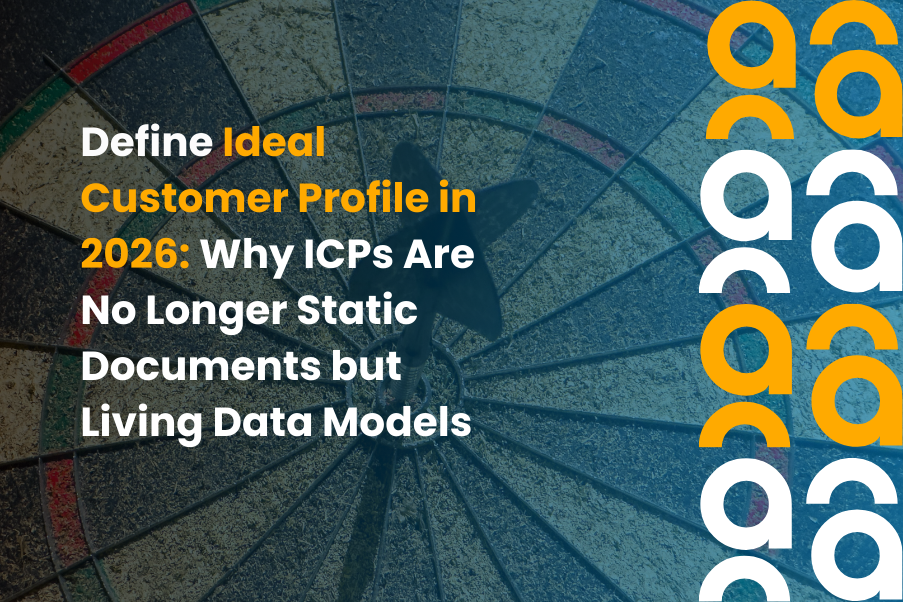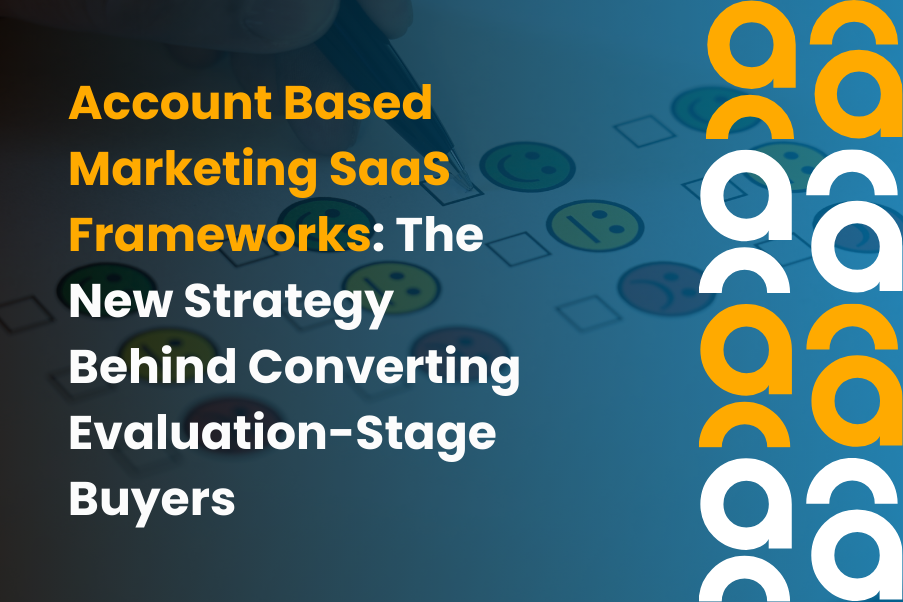5 Criteria That Separate Great B2B Content Syndication Service Providers from the Pretenders

Introduction
You’ve invested in a high-value asset: that whitepaper, that detailed research report, that eBook you know speaks directly to your audience. Now you’re turning to a vendor to amplify it. But how do you know you’re choosing a strong b2b content syndication service provider rather than one chasing volume at the expense of your pipeline?
In this blog, we’ll explore five traits that define the best vendors: transparency, data integrity, lead validation, campaign reporting, and adaptability. You’ll also see how top providers deliver measurable Content Syndication Success, while pretenders hide behind inflated numbers. Use this checklist to make an informed decision before signing your next contract.
1. Transparency: Know What You’re Paying For
The strongest b2b content syndication service provider operates with full transparency. That means:
- Clear definitions of what qualifies as a “lead”: role, industry, company size, and location.
- Visibility into audience data sources, publisher names, and engagement metrics.
- Access to raw CSV or CRM integrations so you can verify the data yourself.
Why it matters
According to a 2025 industry study, companies using transparent syndication campaigns were 61% more likely to achieve lead-generation targets compared to those relying on opaque models. Without transparency, you may pay for leads that never align with your ICP or sales objectives.
Transparency also defines your content distribution strategy. Vendors who hide publisher lists or placements often have little control over audience quality.
Checklist questions
- Does the vendor disclose all publishers and placements?
- Can you access campaign data in real time?
- Is data ownership clearly stated in the agreement?
If any answer is vague, you’re likely dealing with a volume seller, not a results-driven partner.
2. Data Integrity: Quality Over Quantity
A great b2b content syndication service provider knows that accuracy matters more than numbers. Ten relevant, verified leads outweigh a hundred irrelevant ones.
Supporting insight
A 2025 benchmark analysis showed that the average cost per lead for B2B content syndication sits between US $50–$80, with a conversion rate of around 5%. Cheaper bulk offers often trade quality for quantity, which hurts your funnel’s long-term ROI.
To stand out among b2b content syndication vendors, prioritise data precision. Reliable vendors run intent filters, validate titles, and match company domains before submission.
Practical filters
- Use demographic and firmographic criteria to qualify each contact.
- Request intent metrics like content dwell time or follow-up actions.
- Ask for a review window to reject poor-fit leads.
Campaigns built around strong data integrity form the backbone of any effective B2B Content Syndication Strategy.
3. Lead Validation and Follow-Through
The job of a b2b content syndication service provider doesn’t end once leads are delivered. Validation and follow-through determine real value.
Key validation steps
- Human-verified contact details rather than scraped or shared lists.
- Consent captured under current privacy laws to keep campaigns compliant.
- Rapid routing to your CRM or MAP for faster sales engagement.
Why it matters
A 2025 research report found that nurtured leads generate 50% more sales-ready opportunities at 33% lower cost. Vendors that stop at delivery and skip validation lose you time, money, and trust.
The most credible content syndication platforms combine validation, nurture, and intent tracking. This alignment reduces bounce rates and accelerates conversions.
Checklist for validation
- Are contacts pre-screened and intent-qualified?
- Does the vendor provide delivery timing metrics?
- Can your sales team trace every lead’s source and consent path?
Lead validation bridges the gap between awareness and pipeline creation. It’s the mark of a responsible partner, not a data broker.
4. Campaign Reporting and ROI-Focused Metrics
A dependable b2b content syndication service provider offers clarity through numbers. Reporting transforms opinions into actionable decisions.
Metrics you should expect
- CPL (Cost per Lead) and CPQL (Cost per Qualified Lead).
- Lead progression rates across MQL, SQL, and opportunity stages.
- Engagement quality by publisher, region, and asset type.
- Funnel velocity indicators like time-to-first-contact.
2025 benchmark
A recent performance study showed that content syndication leads convert at 5.3% to qualified actions such as demos or consultations. Campaigns with detailed reporting achieved 40% higher ROI than those relying only on final lead counts.
Checklist
- Does your vendor provide weekly dashboards?
- Can you filter data by persona, geography, and publisher?
- Are performance recommendations based on live data?
- Is ROI measured by conversions, not delivery totals?
Transparent reporting defines a sound content distribution strategy. Vendors who struggle to show performance often have little to report.
5. Adaptability and Integration with Your Demand Strategy
The final hallmark of an excellent b2b content syndication services is adaptability. The market shifts fast, and so should your partner.
Why it matters
A 2025 survey found that 89% of B2B marketers use content syndication for lead generation, yet most cite audience targeting and platform selection as their biggest challenges. An adaptable partner adjusts filters, publishers, and formats as results evolve.
Adaptability strengthens your B2B Content Syndication Strategy by allowing campaigns to pivot quickly. The best content syndication platforms support asset changes, integrate with CRM workflows, and sync smoothly with your sales automation tools.
Areas of adaptability
- Switching publishers or ad formats mid-campaign.
- Integrating directly with CRM or MAP systems.
- Matching asset type to buyer stage.
- Scaling based on performance data, not assumptions.
Checklist
- Did your vendor map campaign logic to your ICP at launch?
- Are mid-campaign reviews part of their process?
- Is your data routed instantly into active nurture flows?
- Do they adjust in real time when your audience shifts?
Adaptability keeps campaigns relevant and your pipeline responsive. Vendors that resist change rarely stay effective.
Our Services - How We Deliver Value
At Almoh Media, every campaign starts with clarity and ends with measurable results. As a performance-driven b2b content syndication service providers, we align strategy, execution, and reporting to deliver consistent outcomes.
Explore our B2B Lead Generation Services to see how our Best content syndication platforms and data-backed processes power Content Syndication Success for global agencies and aggregators.
What we deliver:
- Verified, intent-qualified leads that match your ICP.
- Complete data transparency and source-level visibility.
- Real-time dashboards tracking CPL, conversion, and publisher performance.
- Automated CRM and MAP integrations for seamless delivery.
- Weekly optimisation reviews to refine strategy and improve ROI.
- 100% compliance with current data privacy frameworks.
Our difference lies in combining precision with adaptability; maintaining your content distribution strategy generates tangible business growth.
Summary Checklist
Before signing with any b2b content syndication service provider, review this quick reference:
- Transparency on placements, data sources, and ownership
- Data integrity and strict quality validation
- Lead verification and CRM-aligned routing
- Detailed performance reporting tied to ROI
- Adaptability to campaign goals and market shifts
If a vendor fails even one of these, your pipeline will feel the impact.
Conclusion
Every syndication partner looks good on paper. The real difference shows up in your pipeline. Use this checklist, separate the talkers from the doers, and work with a b2b content syndication service provider that delivers outcomes, not excuses.
Contact Almoh Media today to build that difference.
Introduction
If you’re using content syndication, chances are you see it as just another way to get your content in front of more eyes. That’s fine, but there’s a lot more hidden beneath the surface. When you allow its full potential, content syndication ROI can surprise you, and it doesn’t take much to shift perception.
Let’s look at fresh data, outline a winning content syndication strategy, and show how U.S. B2B teams can get real value from it. Let’s begin!
What Is Content Syndication?
At its simplest, content syndication means sharing your B2B content: whitepapers, case studies, blogs on someone else’s site or network. This can be paid or free. You expand your reach, tap into new networks, and generate visibility, often reaching audiences you’d otherwise miss.
Why ROI From Content Syndication Deserves a Second Look
1. Huge lead production for relatively low spend
According to recent studies, the average cost per lead with content syndication is around $43. That’s far lower than other tactics, so even moderate conversion rates can offer solid returns.
2. Fast pipeline growth
Some platforms report that customers see 300–500% return on investment within three years. That’s not fluff – it’s real pipeline growth.
3. Verified conversion tracking methods
With UTM tagging and targeted vendor reports, U.S. marketers can track everything from initial syndication click to closed deal.
4. Built-in trust and positioning
Syndicating through known sites can give you indirect credibility, boosting brand awareness and authority without extra effort.
B2B Content Syndication Strategy: How to Do It Right
A good content syndication strategy starts long before content hits a third-party platform:
a). Pick assets that matter
Whitepapers, case studies, and long-form guides work best. They not only attract interest but also help establish your brand as industry-relevant.
b). Target lead quality, not rush volume
Instead of chasing clicks, target professionals. For example, top B2B firms average a 5.31% conversion rate on syndication offers.
c). Tag everything with UTM links
Measure traffic, engagement, bounce rates, and conversions back at your URL. This helps with syndication attribution.
d). Track core metrics
- CPL (cost per lead)
- MQL-to-SQL conversion rates
- Revenue per lead (use your average contract value)
e). Use the ROI formula
ROI= Revenue−Spend
Spend
For example, $1,000 spent → 50 high-quality leads → $5,000 average value = ($250k – $1k)/$1k = 249× ROI.
f). Optimize, rinse, repeat
Check what works by audience, site, and format. Then double down and drop what doesn’t.
Concrete U.S. ROI Stats You Can’t Ignore
| Metric | Statistics/Insight |
| Cost per lead | $43 average CPL |
| Syndication conversion rate | ~5.31% typical |
| Lead-to-deal conversion lift | 45% increase when focus is on quality |
| ROI over 3 years | 300%–500% reported |
| Projected industry growth | From $4.7 B in 2022 to $5.9 B by 2030 |
Content Syndication for Lead Gen: A Step‑by‑Step Plan
1. Define your ideal audience
Use buyer personas: titles, sectors, company size – so your content finds the right hands. This way, a sharper audience focus helps eliminate wasted spend and improves downstream lead quality.
2. Pick content with substance
Original research, how-to guides, competitive whitepapers – these both educate and convert. Plus, assets that solve specific problems tend to drive stronger engagement and more intent-driven leads.
3. Choose partners wisely
Use third-party platforms to reach U.S. B2B audiences. Look for those offering clear lead reporting and media kits. Before moving forward, ask for case studies or past performance metrics to make a more informed decision.
4. Structure campaigns with UTM tags
Make distinct tracking links for each partner and asset. This makes sure it’s easier to attribute leads, identify top performers, and compare ROI across channels.
5. Launch and monitor
Track CPL, CPL-to-SQL, cost per opportunity, pipeline driven, and revenue tied. At the same time, monitor activity in real-time to catch early trends and shift strategy fast if needed.
6. Review and refine monthly
Use metrics to shift spend toward top performers and tweak underperformers. As a result, consistent optimization keeps your syndication efforts aligned with revenue goals, not just vanity metrics.
How to Calculate Content Syndication ROI
- Calculate total spend (vendor fees + internal costs).
- Count total leads.
- Multiply leads by average deal size for potential revenue.
- Apply the ROI formula:
Revenue−Spend
Spend - Compare ROI over time to benchmark your initiatives.
This method is backed by multiple calculators and case studies.
Hidden Content Syndication Benefits
- SEO gains: Backlinks from quality sources can raise domain authority.
- Brand authority: Recognition on respected sites = credibility.
- Extended content life: A blog post can live on for months if syndicated well.
- Nurture acceleration: Leads from syndication are often further along in buying cycles.
Mistakes to Avoid and Fix Fast
Mistake: Only tracking clicks, not deals.
Fix: Tie every lead back to conversions with CRM integration. That way, you get a clearer picture of what’s actually driving revenue, not just traffic.
Mistake: Focusing only on cheap volume.
Fix: Go after quality; MQL-to-SQL rates matter most. Otherwise, your sales team will waste time on leads that won’t convert.
Mistake: Publishing irrelevant content.
Fix: Audit content – ensure tone, relevancy, and depth match syndication partner audiences. In doing so, you increase the chances of your content resonating with the right decision-makers.
Mistake: Not optimizing over time.
Fix: Regular performance review. Cut poor performers, boost winners. Over time, this helps improve ROI and keeps your content syndication strategy focused and results-driven.
Why Lead Quality Beats Volume
Not all leads are created equal. A smaller batch of high-intent leads can drive more revenue than a huge pool of low-interest ones.
Many B2B brands in the USA are shifting toward account- based syndication, where campaigns are matched to specific industries or companies. This helps improve conversion rates, shorten sales cycles, and increase customer lifetime value.
In short, prioritizing lead quality helps improve the long-term content syndication ROI, especially when targeting high-ticket accounts.
How AI Is Shaping the Future of Syndication
AI tools are starting to reshape content syndication strategy by analyzing behavior patterns and automating placements across high-performing channels.
With predictive scoring, marketers can now:
- Match content formats to individual user segments
- Forecast lead readiness using engagement scores
- Automate syndication at scale using content intent data
These innovations are raising the ceiling on what’s possible for B2B content syndication, especially for companies focused on measurable results.
About Almoh Media
Use metrics to shift spend toward top performers and tweak underperformers.
As a result, consistent optimization keeps your syndication efforts aligned with revenue goals, not just vanity metrics.
At Almoh Media, we specialize in high-impact content syndication for lead gen. We help B2B companies in the U.S. grow their pipelines by delivering:
- Verified lead generation from trusted channels
- Industry-specific targeting and campaign setup
- Transparent reporting tied to your sales funnel
- A proven strategy backed by real ROI
We understand the U.S. B2B buyer journey, and our syndication campaigns are built to generate demand, not just clicks.
Final Takeaway
Content syndication is an easy win if done smartly.
Focus on:
- Quality, not just volume
- Clear tracking and attribution
- Lead-to-deal conversions
- Continuous optimization
With $43 CPL, 5+ percent conversion, and long-term returns of 300–500%, most U.S. B2B teams can justify putting more budget behind it.
Ready to Get Real ROI from Content Syndication?
Let Almoh Media help you build a smarter lead-gen machine. We bring strategy, scale, and precision to content syndication – so your campaigns don’t just get seen; they convert. Reach out now to get started.
-
 Define Ideal Customer Profile in 2026: Why ICPs Are No Longer Static Documents but Living Data Models
Define Ideal Customer Profile in 2026: Why ICPs Are No Longer Static Documents but Living Data Models -
 Go to Market Strategy Example Built Around the Modern Buyer Journey: How B2B Teams Win Before Buyers Even Engage
Go to Market Strategy Example Built Around the Modern Buyer Journey: How B2B Teams Win Before Buyers Even Engage -
 Account Based Marketing SaaS Frameworks: The New Strategy Behind Converting Evaluation-Stage Buyers
Account Based Marketing SaaS Frameworks: The New Strategy Behind Converting Evaluation-Stage Buyers -
 What 2026’s Best-Performing Teams Do Differently when it comes to B2B Account-Based Marketing Campaigns
What 2026’s Best-Performing Teams Do Differently when it comes to B2B Account-Based Marketing Campaigns -
 B2B Account Based Marketing in an Over-Messaged World: The Rise of Context-First Personalization
B2B Account Based Marketing in an Over-Messaged World: The Rise of Context-First Personalization

